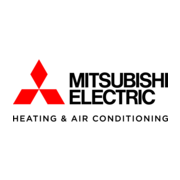Ductless air conditioners, also known as mini-split systems, have become increasingly popular due to their energy efficiency, flexibility, and ease of installation. Unlike traditional central air systems that rely on extensive ductwork, ductless systems consist of an outdoor compressor unit connected to one or more indoor air-handling units via a conduit. This setup allows for targeted cooling and heating, making them ideal for homes without existing ducts or for room additions where extending ductwork is impractical.
How Ductless Air Conditioners Work
Ductless systems operate by transferring heat between the indoor and outdoor units. The indoor unit absorbs heat from the room and transfers it to the outdoor unit, where it's released. This process is reversed during heating. The absence of ducts means there's minimal energy loss, making these systems more efficient than traditional HVAC systems.
Advantages of Ductless Air Conditioners
1. Energy Efficiency
Ductless systems are known for their high energy efficiency. Traditional ducted systems can lose up to 30% of energy through ductwork. In contrast, ductless systems deliver air directly to the room, reducing energy losses. Many models also feature inverter-driven compressors that adjust speed based on demand, further enhancing efficiency.
2. Zoning Capabilities
One of the standout features of ductless systems is the ability to create zones. Each indoor unit can be controlled independently, allowing for customized comfort in different rooms. This zoning capability not only enhances comfort but also contributes to energy savings by cooling or heating only occupied spaces.
3. Easy Installation
Installing a ductless system is less invasive than installing traditional ducted systems. It requires only a small hole to connect the indoor and outdoor units, making it a suitable option for older homes or additions where installing ductwork is challenging.
4. Improved Indoor Air Quality
Ductless systems often come with multi-stage filtration, reducing dust, bacteria, pollen, and other particulates in the air. This feature is particularly beneficial for individuals with allergies or respiratory issues.
Considerations Before Installation
While ductless systems offer numerous benefits, there are factors to consider:
- Initial Cost: The upfront cost can be higher than traditional systems, especially if multiple indoor units are required.
- Aesthetics: Indoor units are mounted on walls or ceilings, which may not align with everyone's interior design preferences.
- Maintenance: Regular cleaning of filters and periodic maintenance are essential to ensure optimal performance.
Ideal Use Cases
Ductless air conditioners are particularly suitable for:
- Homes without existing ductwork: Avoids the need for extensive renovations.
- Room additions or converted spaces: Provides targeted comfort without extending existing HVAC systems.
- Multi-family homes or apartments: Allows for individual control in separate units.
- Energy-conscious homeowners: Offers potential savings on energy bills due to efficient operation.
Conclusion
Ductless air conditioners present a flexible and efficient solution for modern cooling and heating needs. Their ability to provide zoned comfort, coupled with energy savings and improved air quality, makes them an attractive option for many homeowners. However, it's essential to weigh the initial costs and aesthetic considerations against the long-term benefits. Consulting with HVAC professionals can provide further insights tailored to individual needs.
Sources:







